| Architect |
Giles
Gilbert Scott |
| Date Built |
Opened
Officially December 1945 |
| Location |
Carries the
A301 across the River Thames |
| Description |
|
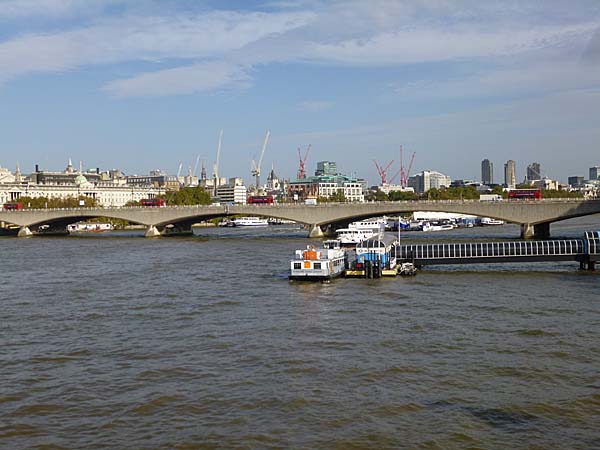 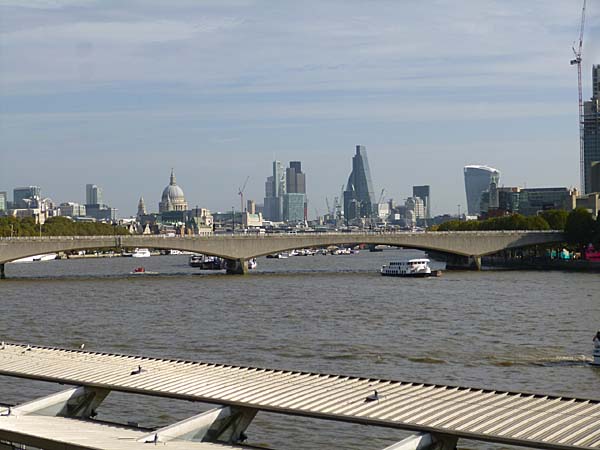 Today’s Waterloo Bridge is a replacement for the original structure of that name opened in 1817 on the second anniversary of the Battle of Waterloo. Designed by John Rennie, that bridge was described by the Italian sculptor Canova as “the noblest bridge in the world”. However, by 1924 this noble bridge was in distress because of the combination of over a hundred yeas of erosion by the river and the stresses of motorized transport not thought of when it first opened. In May of 1924 the bridge was closed for repairs and a temporary girder bridge was constructed to carry traffic over the river in the meantime. What followed was years of wrangling about whether to repair and preserve this historic structure or face up to the fact that it was irreparable. In the end, Sir Giles Gilbert Scott was commissioned to design a new bridge, the one we see today, with a total length of 1200 feet with five spans. It carries a 57 foot wide carriageway and two 11 foot pedestrian footpaths.  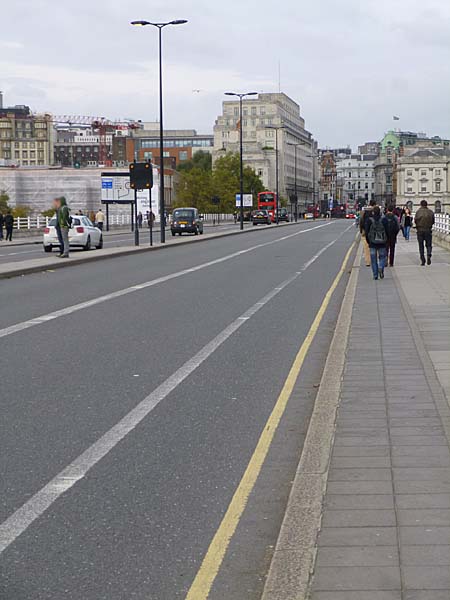  The concrete structure was clad in Portland Stone. 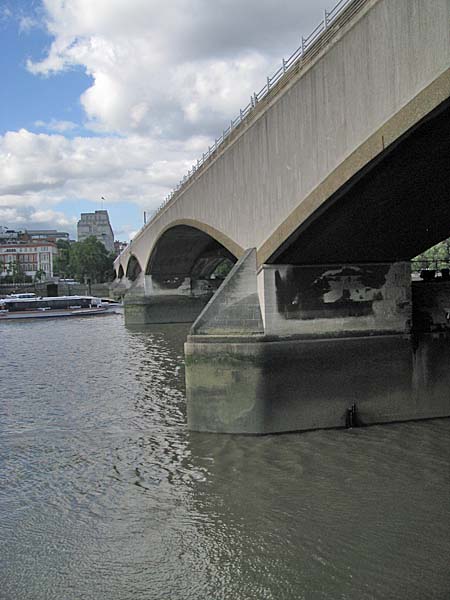 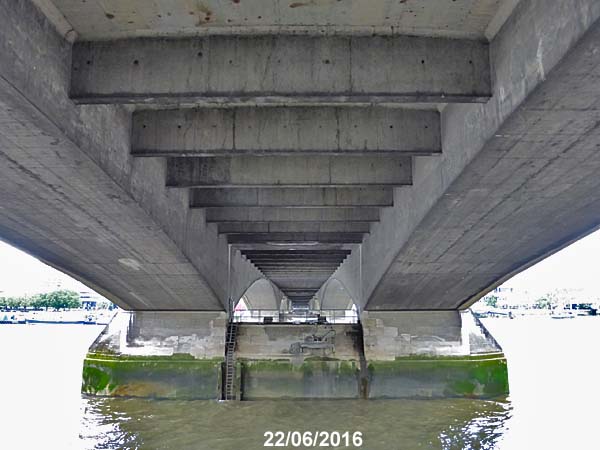 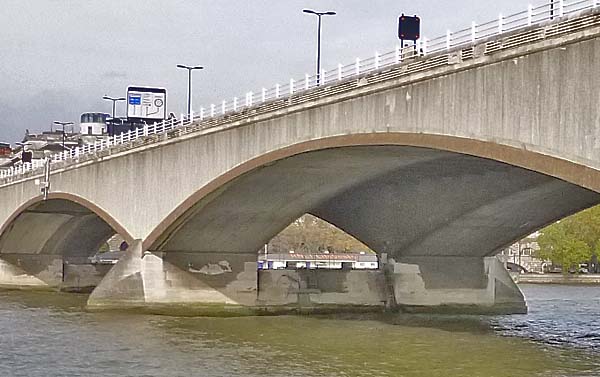 The builders on the project were Peter Lind & Company. The old bridge was demolished in 1937 and soon after work began on the new structure. In 1939 there were 500 men employed on its construction but with the outbreak of war that soon fell to 150. Construction was hampered by the shortage of labour but that problem was eventually solved by employing a mainly female work force which is why it is referred to as “The Lady Bridge”. Ironically, with all the other challenges they faced with a war-time construction project, Waterloo Bridge was the only London bridge bombed during World War II with a hit on May 10, 1941. Herbert Morrison, Leader of London County Council, had begun the demolition of Rennie’s bridge in 1937 by breaking the first stone. He was back on December 10, 1945 to officially open the second Waterloo Bridge. 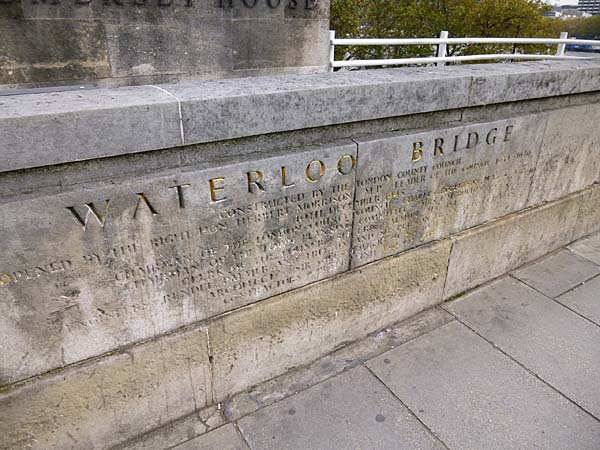 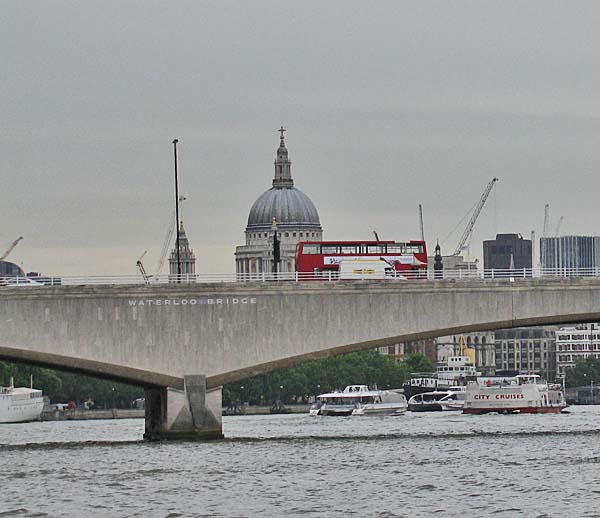 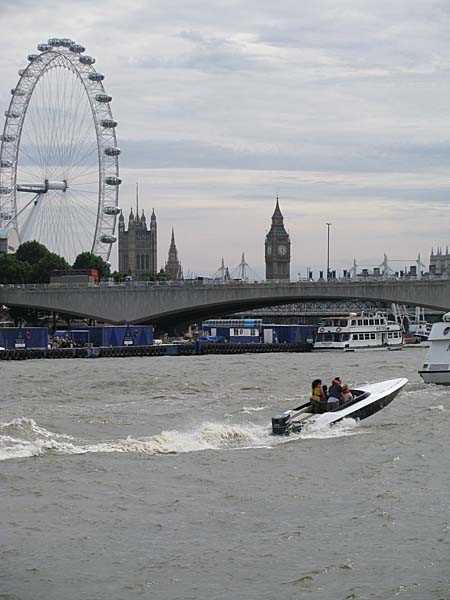 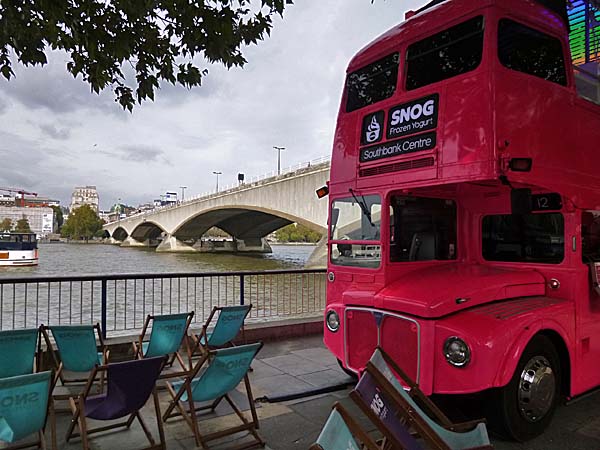 |
|
|
Waterloo
Bridge, London
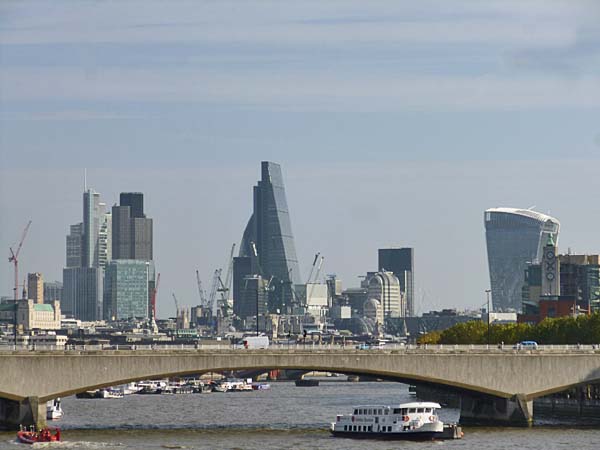 |
